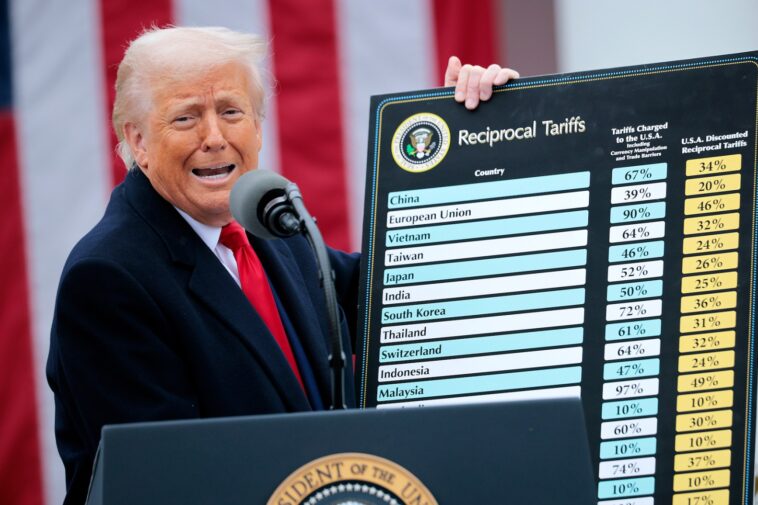As negotiations on international commerce regain momentum under the stewardship of US President Donald Trump, a fresh study by the Global Trade Research Initiative (GTRI) suggests that tariffs are evolving from mere policy instruments to means of enforcement. Analyzing the report, it seems that Trump’s commercial diplomacy is grounded more on intimidation than on international collaboration. Rather than hashing out equitable bidirectional commitments under conventional Free Trade Agreements (FTAs), the United States seems to be imposing demands on other nations to reduce their tariffs and augment their purchases of American merchandise without offering equivalent trade-offs.
Such treaties, as GTRI points out, frequently bear the signature of duress and are lacking in symmetry. One of GTRI’s principal apprehensions lies in the fact that these trade contracts do not guarantee enduring stability. The possibility of new tariff threats remains, even post-deal. Implicitly pointing to Trump’s recent threat to impose a tariff of 10% on goods from BRICS countries, inclusive of India, for their supposed ‘anti-American’ disposition. India has already put forth their final trade propositions and could soon seal an agreement with the US.
Despite this, GTRI’s report divulges that Indian exports may still be subjected to additional duties even subsequent to finalizing a deal. Projection on the residual impact of a 26% excess charge levied on Indian merchandise in April suggests it may not be fully retracted. There’s a probability that Indian exporters may take a hit with at least an additional 10% tariff. Trump has now lengthened the cut-off date for nations to ink trade agreements, moving it from July 8 to July 31.
Nations that do not adhere to this timeline could potentially face fresh tariffs of up to 40% from the first day of August. India features amongst the nations that have been officially cautioned of impending tariffs. These potential tariffs would exist in addition to the existing Most Favoured Nation (MFN) rates. However, sectors like steel, aluminium, automobiles and automobile components, which are already burdened with high duties, are likely to remain unaffected.
Taking the case of Japan as a comparison, tariffs on articles such as semiconductors, pharmaceuticals, and mobile phones will continue to be charged at 0%, while the tariffs on steel and aluminium will maintain a 50% rate. Automobile tariffs will hold steady at 25%, and rates for other goods may inflate from 10% to 25%. As it stands, Trump does not possess Fast Track Trade Authority from the Congress, which confines his ability to lower MFN tariffs.
Instead, he is exercising emergency powers in an effort to retract the so-called ‘Liberation Day’ tariffs that were set up in April. However, the legitimacy of such tariffs is under dispute. The U.S. federal court has previously determined them to be illegal and although the case is in the appeal process, it injects further unpredictability into the outlook of such a trade approach.
In summary, the Global Trade Research Initiative cautions that Trump’s trade strategy provides limited protection or predictability. Nations entering into these agreements still remain susceptible to the potential shock of future tariffs. The absence of reciprocity or mutual concessions in these arrangements severely undermines the stability and injects an element of risk into the global trade ecosystem.

